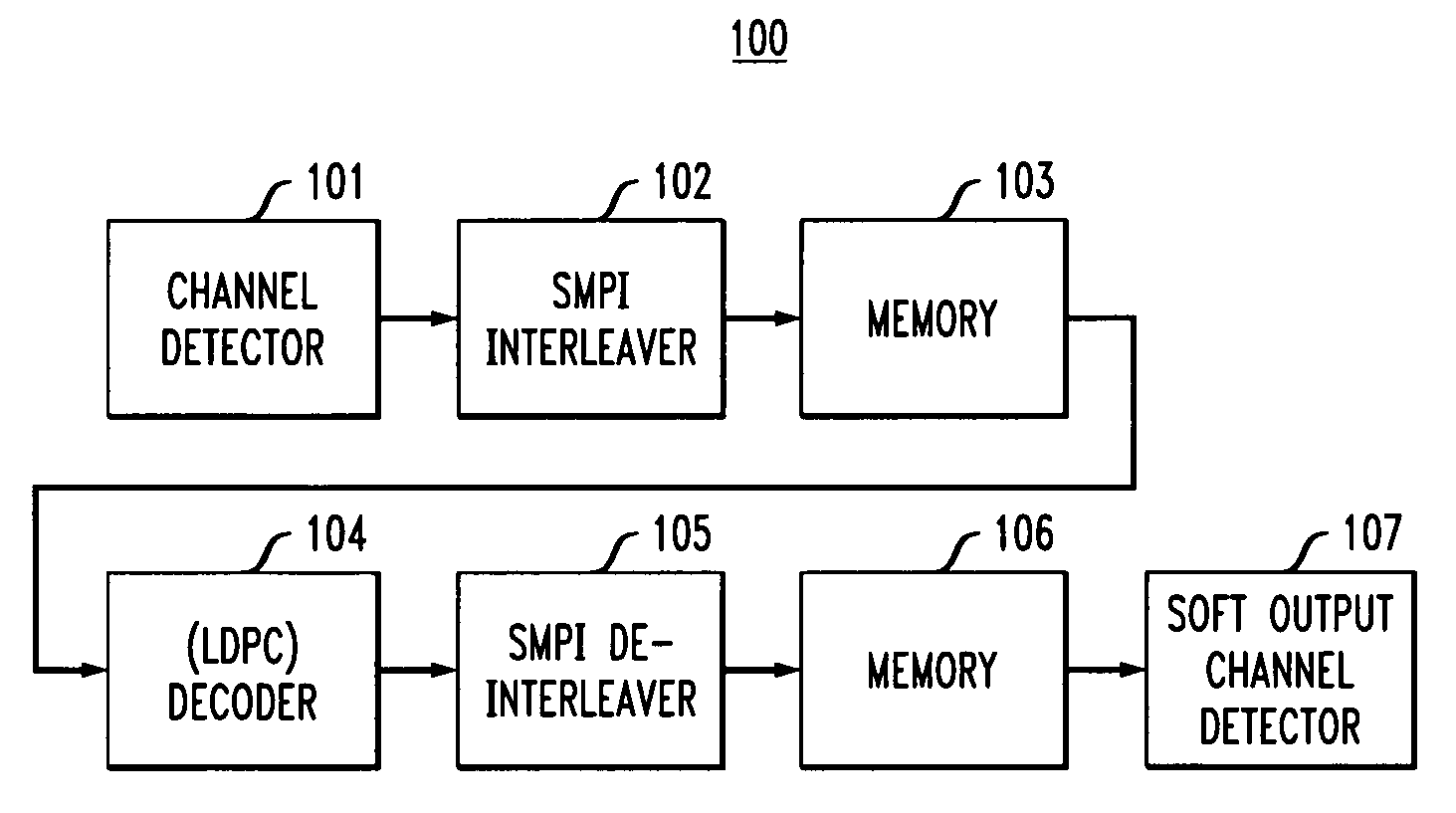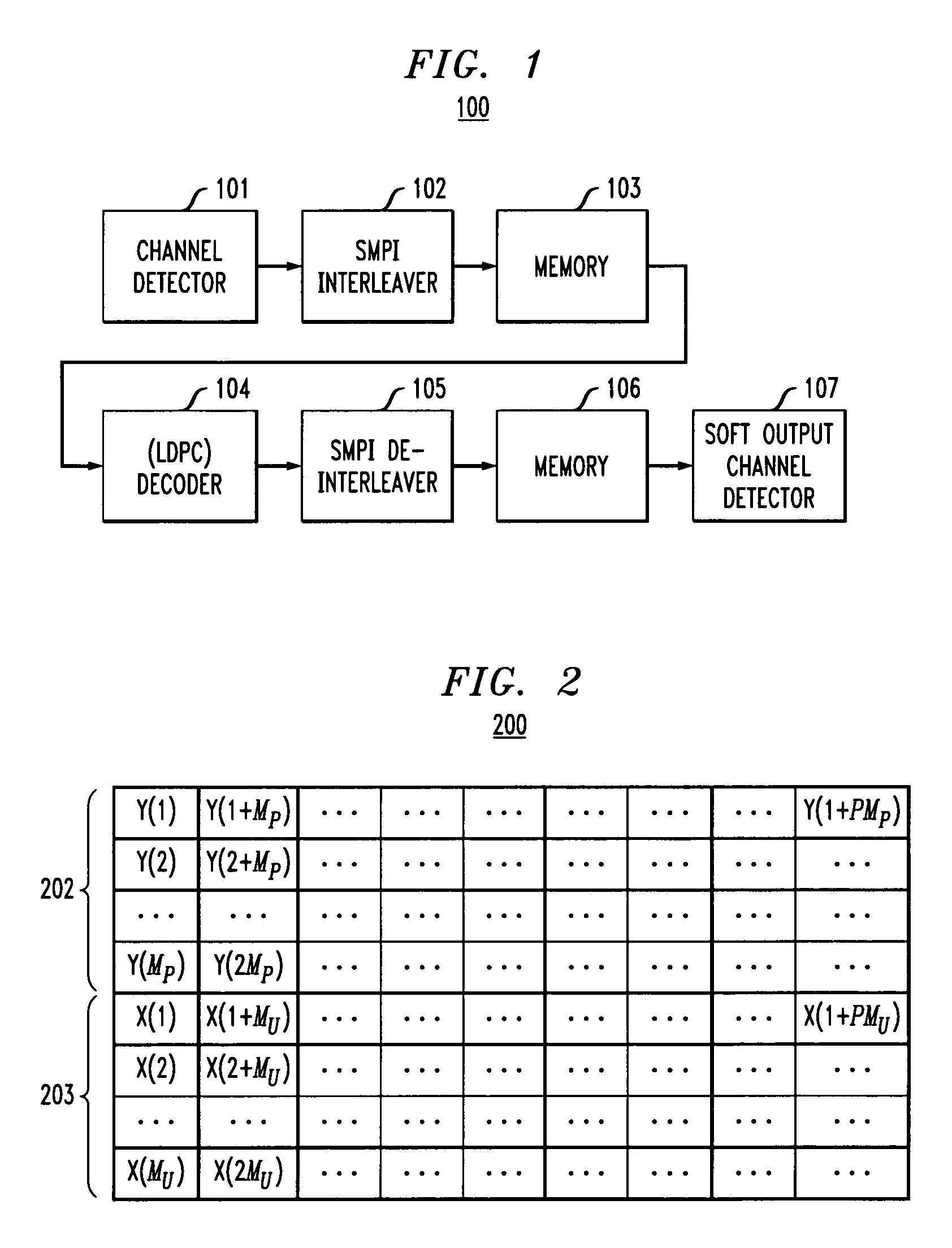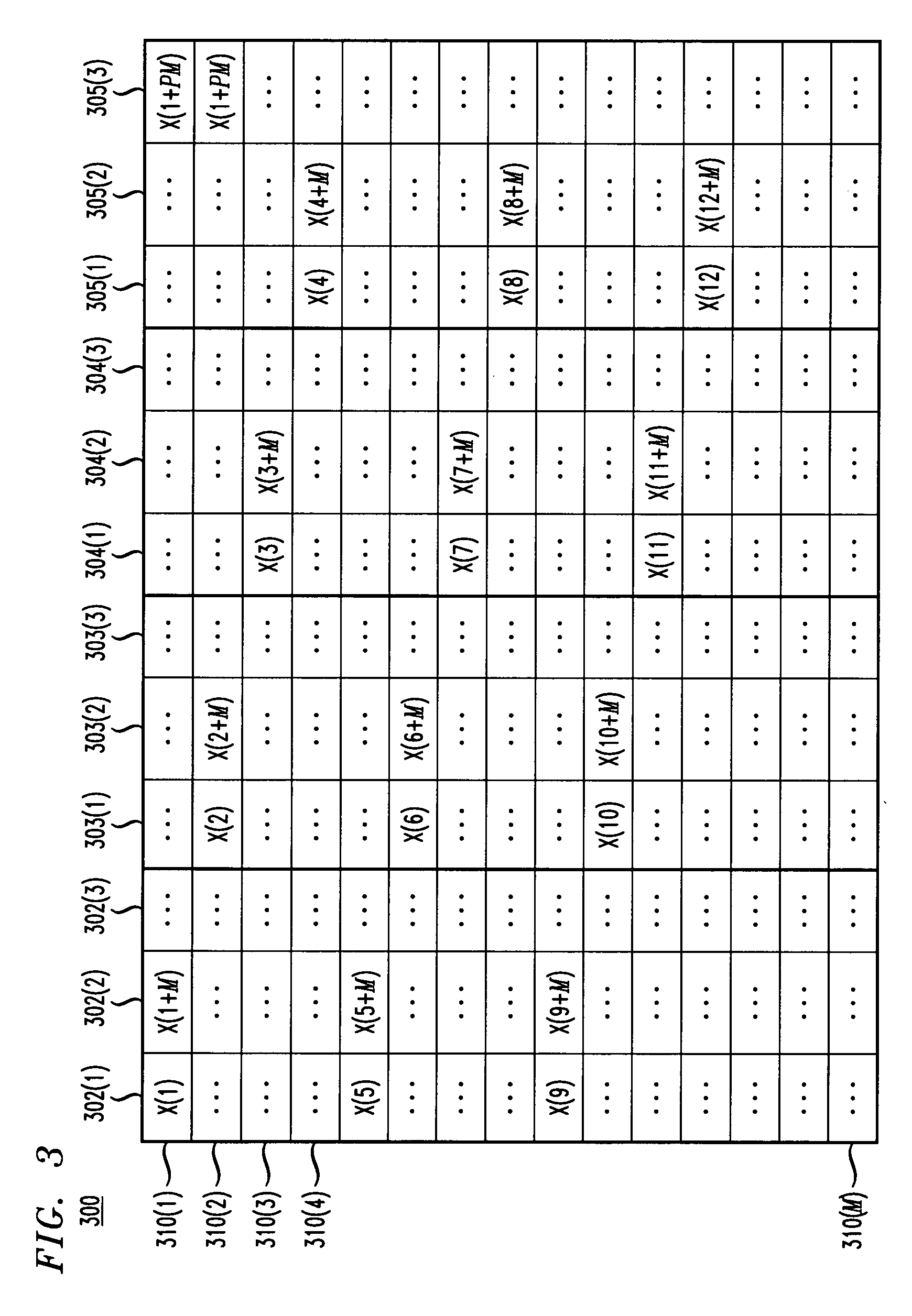Interleaver and de-interleaver for iterative code systems
- Summary
- Abstract
- Description
- Claims
- Application Information
AI Technical Summary
Problems solved by technology
Method used
Image
Examples
Embodiment Construction
[0020]As will be described, embodiments of the present invention provide an interleaver and deinterleaver for allocating data to a memory for use in, for example, iterative code systems. The interleaver employs an interleaver function having a skewed row and column memory partition and a layered structure for re-arranging data such as samples read from, for example, a channel detector. An iterative decoder, such as an iterative decoder based on a low-density parity-check code (LDPC), might employ an element to de-skew the data from the interleaver before performing iterative decoding of the data, and then re-skew the information before passing decoded data (samples) to the de-interleaver. The de-interleaver re-arranges the iterative decoded data samples in accordance with an inverse of the interleaver function before passing the decoded data samples to, for example, a second channel detector.
[0021]Referring first to FIG. 1, there is shown an illustrative system 100 employing one or ...
PUM
 Login to View More
Login to View More Abstract
Description
Claims
Application Information
 Login to View More
Login to View More - R&D
- Intellectual Property
- Life Sciences
- Materials
- Tech Scout
- Unparalleled Data Quality
- Higher Quality Content
- 60% Fewer Hallucinations
Browse by: Latest US Patents, China's latest patents, Technical Efficacy Thesaurus, Application Domain, Technology Topic, Popular Technical Reports.
© 2025 PatSnap. All rights reserved.Legal|Privacy policy|Modern Slavery Act Transparency Statement|Sitemap|About US| Contact US: help@patsnap.com



